Name The Man | Media Photograph | |
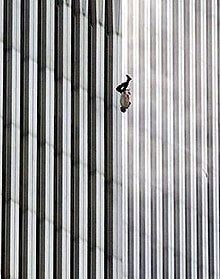 | ||
Created September 11, 2001–September 11, 2001 Awards World Press Photo Award for Spot News Similar The Falling Soldier, Bloody Saturday (photograph), V J Day in Times Square | ||
Richard Drew, photographer of 'The Falling Man'
The Falling Man is a photograph taken by Associated Press photographer Richard Drew of a man falling from the North Tower of the World Trade Center at 9:41:15 a.m. during the September 11 attacks in New York City. The subject of the image, whose identity remains uncertain, was one of the people trapped on the upper floors of the skyscraper who either fell searching for safety or jumped to escape the fire and smoke. At least 200 people are believed to have fallen or jumped to their deaths that day while other estimates say the number is half of that or fewer. Officials could not recover or identify the bodies of those forced out of the buildings prior to the collapse of the towers. All deaths in the attacks except those of the hijackers were ruled to be homicides due to blunt trauma (as opposed to suicides). The New York City medical examiner's office said it does not classify the people who fell to their deaths on September 11 as "jumpers": Ellen Borakove, the examiner's office spokeswoman, said "A 'jumper' is somebody who goes to the office in the morning knowing that they will commit suicide. These people were forced out by the smoke and flames or blown out."
Contents
- Richard Drew photographer of The Falling Man
- The falling man behind the photo 100 photos time
- Publication history
- Identification
- Jonathan Briley
- Other uses
- References
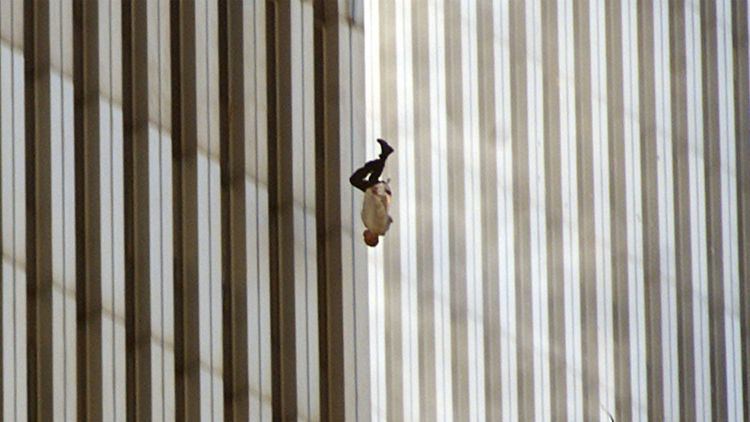
The photograph gives the impression that the man is falling straight down; however, a series of photographs taken of his fall showed him to be tumbling through the air.
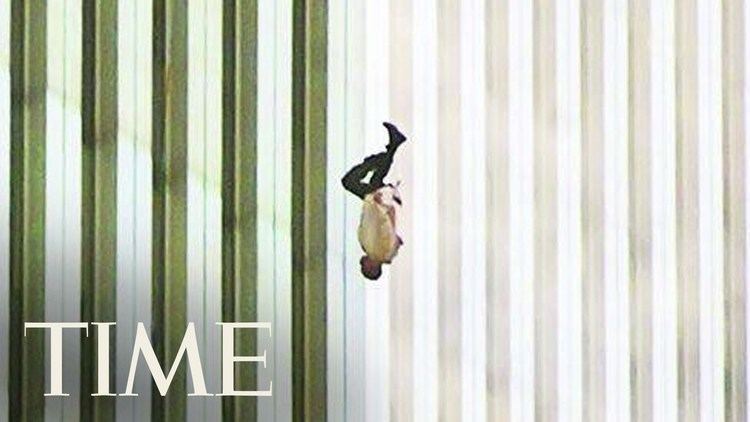
The photographer has noted that, in at least two cases, newspaper stories commenting on the image have attracted a barrage of criticism from readers who found the image "disturbing".
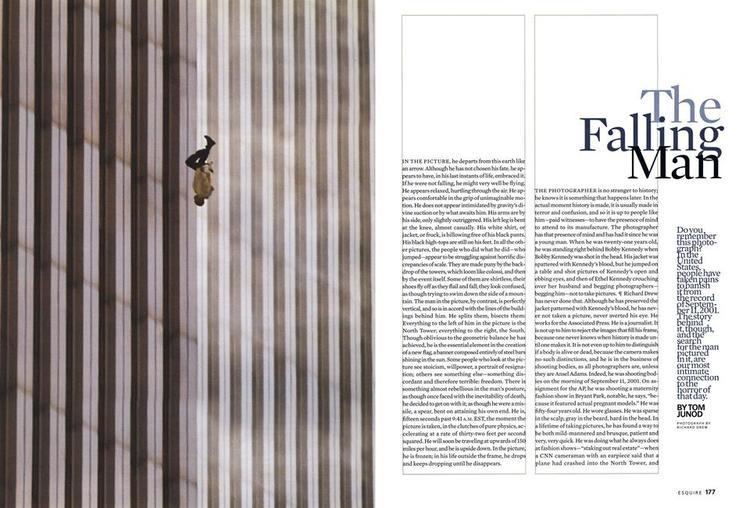
The falling man behind the photo 100 photos time
Publication history
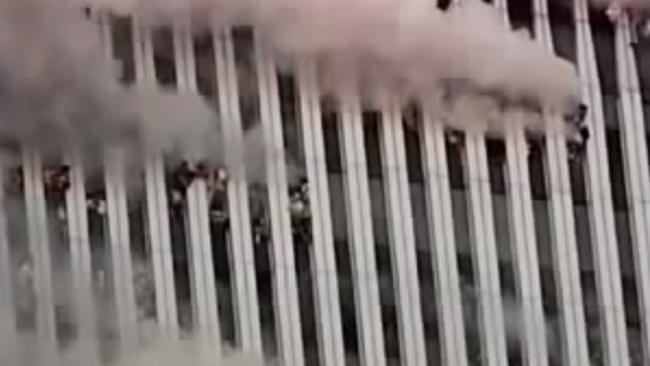
The photograph initially appeared in newspapers around the world, including on page 7 of The New York Times on September 12, 2001. The photo's caption read "A person falls headfirst after jumping from the north tower of the World Trade Center. It was a horrific sight that was repeated in the moments after the planes struck the towers." It appeared only once in the Times because of criticism and anger against its use. Six years later, it appeared on page 1 of The New York Times Book Review on May 27, 2007.
Identification
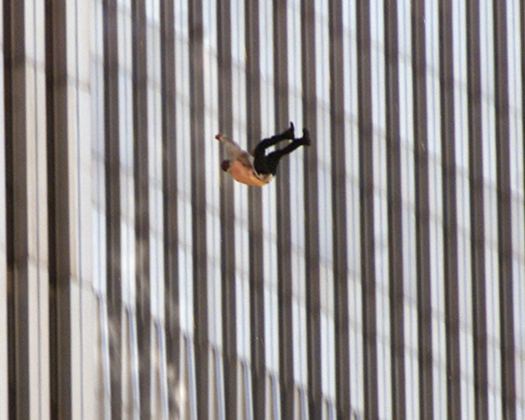
The identity of the subject of the man has never been officially confirmed. The large number of people trapped in the tower has made identifying the man in the 12 photos difficult. It is thought, though the number is uncertain, that at least 200 people fell to their deaths.

Reporter Peter Cheney suggested in the nationally distributed Canadian newspaper The Globe and Mail that the man pictured in the photo may have been Norberto Hernandez, a pastry chef at Windows on the World, a restaurant located on the 106th floor of the North Tower. Some members of Hernandez's family agreed with Cheney, but after examining the entire photo sequence and note details of his clothing, were no longer convinced.
Jonathan Briley
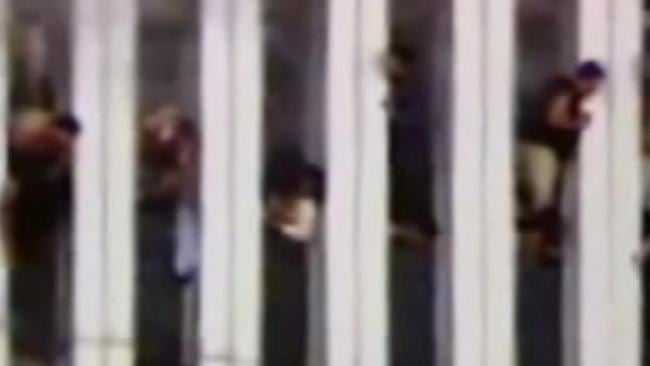
"The Falling Man", an article about the photograph by American journalist Tom Junod, was published in the September 2003 issue of Esquire magazine. It was adapted into a documentary film by the same name. The article gave the possible identity of the falling man as Jonathan Briley, a 43-year-old audio technician for Windows on the World. Briley, a resident of Mount Vernon, New York, was a sound engineer. His brother, Alex was an original member of the 1970s disco group Village People. Briley had asthma and would have known he was in danger when smoke began to pour into the restaurant.
Michael Lomonaco, the Executive Chef/Director at Windows on the World, also suggested that the man was Briley. Briley was initially identified by his brother, Timothy. Lomonaco could identify Briley by his clothes and his body type. In one of the pictures, the Falling Man's shirt or white jacket was blown open and up, revealing an orange t-shirt similar to one shirt which Briley often wore. Briley's older sister, Gwendolyn, originally helped in identifying the victim. She told reporters of The Sunday Mirror, "When I first looked at the picture [...] and I saw it was a man—tall, slim—I said, 'If I didn't know any better, that could be Jonathan.'"
Other uses
9/11: The Falling Man is a 2006 documentary film about the picture and the story behind it. It was made by American filmmaker Henry Singer and filmed by Richard Numeroff, a New York-based director of photography. The film is loosely based on Junod's Esquire story. It also drew its material from photographer Lyle Owerko's pictures of falling people. It debuted on March 16, 2006, on the British television network Channel 4. It later made its North American premiere on Canada's CBC Newsworld on September 6, 2006, and has been broadcast in over 30 countries. The U.S. premiere was September 10, 2007, on the Discovery Times Channel.
The novel Falling Man, by Don DeLillo, is about the September 11 attacks. The "falling man" in the novel is a performance artist recreating the events of the photograph. DeLillo says he was unfamiliar with the title of the picture when he named his book. The artist straps himself into a harness and jumps from an elevated structure in a high visibility area (such as a highway overpass), hanging in the pose of The Falling Man.
